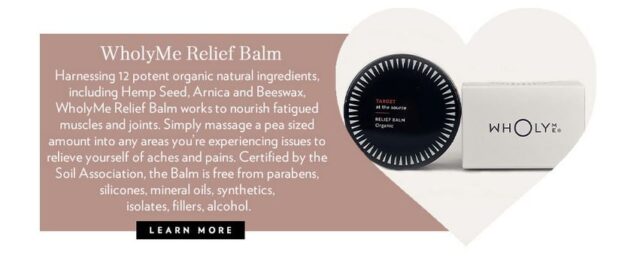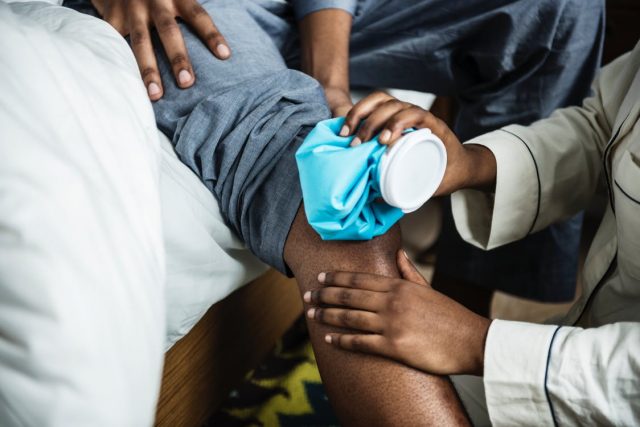Wheelchair Exercises for the Disabled: 3 Recommended Exercises + Safety Tips

Waves of aching pulsing through your brain. Sharp sensations shooting in your backside. Intense cramping in your stomach.
Being in pain can seriously ruin your day. It’s no wonder most of us are quick to take a painkiller to stop the aching so we can get on with our lives.
But mindlessly popping a pill can carry potential risks that may make you want to consider (complimentary) natural ways to ease your pain.
I’m not advocating against the use of pain medication – only you and your physician can decide whether taking pills is the right choice for you. Moderate to severe pain is actually widely under-treated, which leads to unnecessary suffering, decreased functioning and depression. In this post, I simply want to raise awareness of the possible risks of painkillers and offer other, complimentary strategies to ease pain.
Disclaimer: This article is not intended to replace a consultation with a qualified health professional. Always seek the advice of your doctor with any personal medical questions that you may have!
This blog post contains affiliate links to products you might find helpful, at no extra cost to you.

Is your pain linked to an underlying illness? Could it be a sign of physical strains or overstimulation? Maybe food intolerances play a part in causing your intestinal aches? Consult your doctor and try to treat/prevent the cause.
Unfortunately, many people suffer from chronic pain that has a clear cause, like rheumatism or Crohn’s disease, but is difficult to treat. In these cases, our bodies continue to tell us that something is wrong, even though the body is unable to heal the damaged tissue. That’s when pain stops to serve its purpose and becomes destructive to our overall health.
Chronic pain can have devastating effects on the quality of your life. Often people need pain medication to be able to function. But what can you do when the adverse side effects are taking a further toll on your health? What if you still experience pain and don’t want to pop even more pills?
And let’s not forget that a generally healthy person can also experience minor but annoying pain sensations, like a headache or menstrual cramps.
What are your options to ease the pain without taking painkillers?

Heat or cold treatments. The warmth from a bath or a heatable cherry pit pillow soothes sore muscles and stiff joints by increasing the blood flow to the painful body part(s). For a cold treatment, wrap a towel around a bag of ice and place your cold pack on red, swollen or acutely injured areas to reduce inflammation.
Physical therapy involves the treatment of injuries by restoring function or movement, which helps to relieve pain. Under supervision of a skilled therapist, you’d perform strengthening exercises, stretching or low-impact aerobics that are designed for your particular health condition. Hydrotherapy – gentle exercises in water – can benefit people who find resistance training on dry land painful.
Progressive Muscle Relaxation is a technique to relieve tension in your muscles. First you contract a muscle group as tightly as possible, after which you consciously relax your muscles. Start with alternating tension and relaxation in your feet and then work your way upwards, through all the major muscle groups in your body.
Acupuncture is an ancient practice of Chinese medicine in which an acupuncturist inserts thin needles in precise points on the body to stimulate the flow of “chi”, the body’s life energy. Recent studies have found that acupuncture brings 30% more pain relief than traditional pain medication. The age-old healing method seems effective in treating lower back pain and tensions headaches. Acupuncture can be a helpful addition to conventional treatment for people with chronic pain, which improves their quality of life.

Apply topical pain relief products. These balms and creams will not magically fix your pain, but they can help to manage it well. The WholyMe relief balm contains an innovative formula of 12 potent natural ingredients like arnica oil, hemp seed and eucalyptus essential oil to ease sore muscles and aching joints.
Adopting an inflammatory diet may be beneficial when an inflammatory disease causes your recurring pain. In these guidelines, dr. Andrew Weil explains how certain foods can affect the inflammation process that causes many serious illnesses, such as autoimmune diseases and atherosclerosis. While an excess of omega-6 fatty acids from animal protein and high-glycemic products promote inflammation, other foods can actually have a positive influence on the inflammatory process. For example, research has shown that ginger, turmeric and cherries have an anti-inflammatory effect on the body. Try for yourself whether certain foods have an impact on your inflammation and pain levels.
Give aromatherapy a try. There is increasing evidence that short-term exposure to scents such as eucalyptus, lavender and even green apple can be effective in relaxing your muscles and relieving pain. The essential oils seem to work directly onto the limbic system in the brain, which influences your hormones, emotions and nervous system.
Get a Massage. A soothing massage isn’t just a great way to unwind and reduce muscle tension, but it’s also an effective treatment to lessen pain. Massage therapy is increasingly being offered in addition to standard treatment for a range of health problems. There are many different types of massage, from a regular Swedish massage with gentle long strokes and kneading to shiatsu or a hot stone massage. Would you like to get in touch with the benefits of massage? Find a certified therapist to help you find out which massage style is right for you.


Find an effective way to manage daily stress. Feeling stressed has a negative influence on pain. It can cause cramped muscles, headaches and stomach problems. So actively try to avoid unnecessary stress, by setting boundaries and limits for yourself. For example, don’t take on extra responsibilities when you’re to-do list already overwhelms you. Learn to say ‘no’. Stop reading work email one hour before bedtime. Take control and find a creative way to stay away from those daily hassles – like watching the news or getting stuck in traffic – that stress you out.
Of course you can’t avoid every stressful situation. That’s why it’s important to learn how to cope with everyday stress in a health way. It’s tempting to temporarily escape your troubles by having a drink, zoning out in front of the TV or digging in to a large bowl of ice cream, but taking charge to solve your problems is actually linked to less future stress, depression and anxiety than emotional coping strategies. When you have no control over a stressful situation, you can adapt by changing your expectations and attitude. Try to look at the situation as a challenge, with opportunity for personal growth, instead of a threatening event.
Adopt a healthy lifestyle. I’ve already mentioned the effects that nutrition can have on inflammation and gut problems. Exercise can also play a preventive and healing role in painful muscles and joints. Strengthen your overall health by getting enough sleep, and avoiding cigarettes and too much alcohol. Regularly make time to relax and recharge, by going for a walk in nature, talking to your best friend or curling up with a good book. Check out these 21 simple ideas to kickstart a healthier lifestyle today.

How do you relieve pain naturally? What natural remedies or lifestyle changes have you tried?
If you’d like to learn more about chronic pain management, check out my latest interview with Lin Health.
If you enjoyed reading this article, you might also like 8 Mental Techniques to Cope with Chronic Pain or discover 14 Comfort Items for Bad Pain Days.